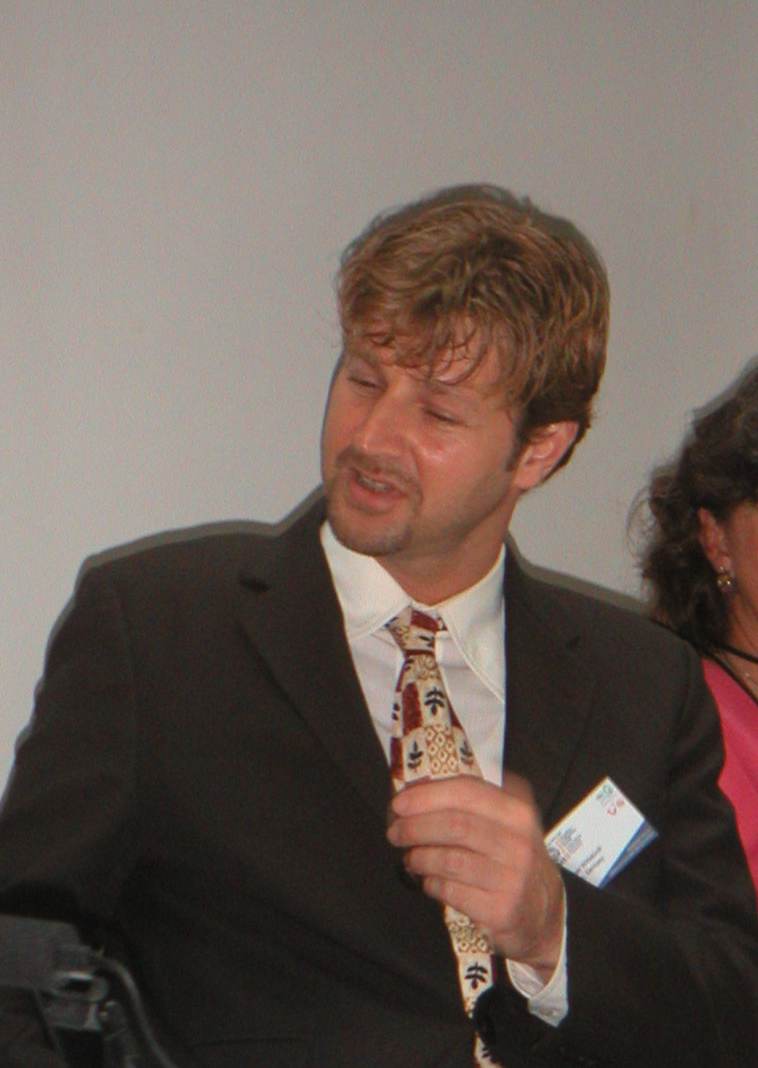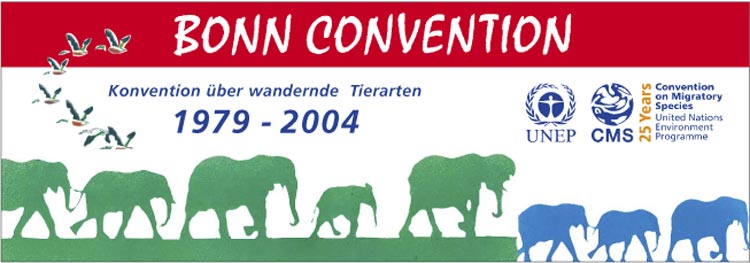Round Table Discussion
Wednesday, 23th June 2004 10:30 - 12:00am

 Moderator: Holger Wittekindt
Moderator: Holger Wittekindt
Prof. Dr. Klaus Töpfer
Introduction: Jens Enemarc
[PPS] [PDF]
Participants:
Dr. Pierre Devillers - Royal Belgian Institute of Natural Science
Dr.Wolf Michael Iwand - TUI AG
Chris Bulter-Stroud - Whale and Dolphin Conservation Society
Dr. Olga Pereladova - WWF Central Asia
Zamir Dedej - Ministry of Environment for Nature Protection
Jens Enemark - Waddensea Sea Seals
As an introduction to the Round Table, Jens Ennemark presents the oldest Agreement under the Bonn Convention – the
trilateral Wadden Sea Agreement, in force since 1978, and focussing on the protection and conservation of the Wadden Sea.
His presentation was an impressive example on how the Bonn Convention works:
as a framework for international agreements focussing on conservation of migratory species and their habitats, specifically
tailored to the needs of species groups (such as seals and Schweinswale, in the case of the Wadden Sea) and their habitats,
which often comprise entire regions. Different sovereigns and environmental law complicate coherent and efficient implementation
of measures to protect entire ecosystems, such as the Wadden Sea, which must be considered as an ecoregion broken up by
national borders. The Wadden Sea Agreement stands as an example for all other agreements, already presented by Dr. Pierre
Devillers. In the following Round Table, Holger Wittekindt discussed with workshop participants representing Governmental and
Non-Governmental organisations, the Scientific Council and “focal points” of the Convention, and the tourism industry. He
asked for wishes and visions for the future, based on experiences of participants´, some of which know the convention since
its entry into force, in 1983. Everybody agreed that the situation for many migratory species is difficult – during the
workshop, this has been demonstrated impressively for marine species, which suffer from overfishing and by-catch, and
pollution at any part of the Deep and High seas, including remote areas as the Antarctic, with noise and chemicals.
Christopher Stroud summarised the problems discussed during the workshop as “conservation on the edge”: many migratory
species have not yet been recognised as threatened at all by “mainstream” conservation (such as the Bukhara deer, or the
antelopes), or they occur in vast, remote areas difficult to control, but plundered by hunting mafias or powerful
industries (think of the Sahara hunting expeditions, or the trawlers and long-liners operating in International Waters).
But the workshop also was an excellent opportunity to learn about cutting-edge research: hitherto unknown migratory pathways,
revealed by satellite telemetry, simple measures which could save the lifes of thousands of sea turtles (like changing the
form of hooks), or straight-forward adoption of the convention in national iurisdiction (as applied by Albania, one of the
youngest member states of CMS). Finally, there are outstanding examples of initiatives uniting forces of NGOs, local people
and cooperative government partners, such as the project of Dr. Olga Pereladova. In spite of an extremely low budget, she
managed that the Bukhara deer is now a flagship species, recovering throughout its vast range of Central Asia, Many other
species profit from such initiatives, most of which are nowadays holistic, concerned with entire ecosystems, including local
people and education. She stressed that for her work the Bonn Convention was an important international umbrella, providing
shelter when dealing with the many stakeholders involved. When addressing the problems of global change and global warming
in the Aral Sea region, she stated that “there have been so many scientists involved in saving the Aral Sea, that if everybody
would have contributed with some bottles of water, the Aral Sea would already have been saved...”. For me, and I think for
many other participants, this statement summarises the lessons from this workshop:
- it is useless to blame “global change” for our problems, and there is no time to wait for the “big” solutions –
many small initiatives can move things ahead!
- comparatively small budgets can be used efficiently for nature protection, if they are combined with knowledge and
efficient concepts
- CMS has provided such concepts, through its agreements, research and networking
- CMS is now uniting forces, by liasing with NGOs and partners from industry, to continue its difficult mission of
transboundary species conservation.
|

